Internet-based recording of transportation job orders at Setz AG
Setz Gütertransport AG (hereafter called Setz) uses a new IT service that enables its customers (hereafter also called shippers) to carry out internet-based recording of transportation job orders. This case study describes how the new solution for making and processing transportation job orders brings advantages for both logisitics service providers and shippers: customer-friendly processes and cost savings.
Table of Contents
1. Background2. Goals
Target Group
3. Solution architecture
System Architecture, Volume Parameters
4. Description of solution from the point of view of the shipper
Process Overview, File Transfer
5. Description of solution from the point of view of Setz
Consignment Tracing
6. Incorporating yellowlog’s service into the Setz system
Yellowlog, Outsourcing
7. Outlay/workload incurred in set-up and running of the solution
Investment Burden, Ongoing Costs
8. Decision-making criteria for introduction of the system
1. Background
Setz Gütertransport AG, a leading Swiss logistics service provider, commissioned yellowworld with the set-up and running of SetzNET, with database-supported information holding and automised distribution of information. Prior to introduction of the new solution, data for new job orders came into the company by an extremely wide variety of means: by fax, telephone or e-mail. This entailed a great deal of order recording and coordination work, diverse sources of error and as a consequence shortcomings in quality and increased process costs. These problems were held in check where possible by means of customer-specific software solutions or EDI interfaces, but a non-media-disparate EDI interface is only worthwhile for the largest customers of Setz.
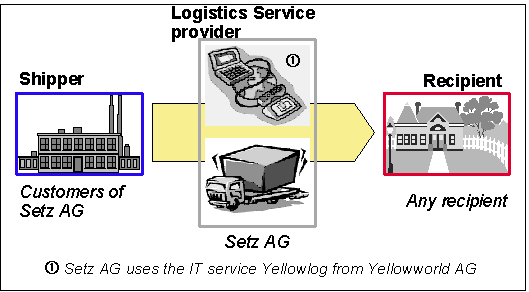
Fig. 1: Those involved in this case study
2. Goals
In mid-2002 the Setz management decided to introduce an internet-based recording system for transportation job orders. [target group] The system, called SetzNET, is aimed at all customers who enter between 1 and 50 job orders per day for execution by Setz. SetzNET was designed to overcome media gaps with regard to recording job orders and create the basis for perfectly running job order processing by means of a uniform information flow. Customers were to be provided with a tool that fulfilled all their organisational and technical requirements and that would increase customer retention for Setz through added services.
Web-based transportation job ordering forms the basis for further planned modules and functions in SetzNET. By means of a commonly used infrastructure, cheap processes and high-quality performance should further develop customer retention and the company’s competitive position.
3. Solution architecture
The solution architecture [system architecture] is illustrated schematically in the following diagram. Administrative employees on the shipper side log into SetzNET, enter transportation job orders and use the file upload function for transferring job orders from their system.
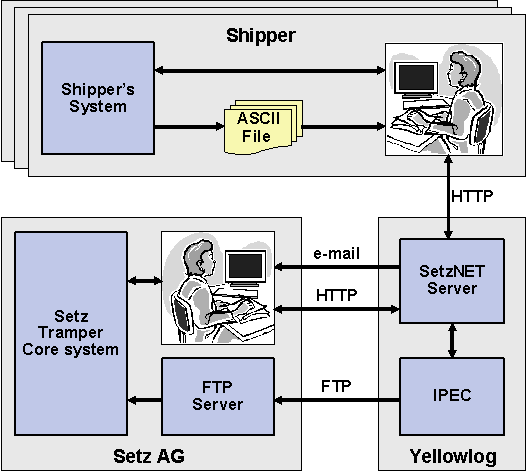
Figure 2: Schematic diagram of solution architecture
Yellowlog, a yellowworld e-service, forwards the data received after conversion to Setz in two forms: firstly as an e-mail and secondly via FTP to be received by the Setz core system. Via browser, logistics records specific Setz processes.
yellowlog was set up for Setz with the following volume parameters:
Table 1: Quantification
| Number of customers | 2,500 |
| Number of transportation job orders (TA) | 2,000 per day |
| Number of transportation units packaged goods per transportation job order | 1 (normal case) |
| Number of simultaneous system users | 50 |
| Data holding | 6 months for online retrieval |
4. Description of solution from the point of view of the shipper
High acceptance of the new SetzNET system among shippers is the critical success factor for this solution. To achieve this high acceptance, in addition to an intuitively operable user interface, the processes for customers were designed as follows:

Fig. 3: Process diagram: shipper
The shipper logs into the Setz website via browser with a user name and password. A preceding, one-time registration process ensures that the data to be entered into SetzNET is correctly processed and that the shipper has personal access to SetzNET. Now the latter can enter a new transportation job order or retrieve a list of existing job orders not yet released for execution and amend them.
Recording of job order data (recipient, consignment units, transportation or dangerous goods information, pick-up or delivery notice) is supported in several forms:
- Manual recording in forms
- Retrieval of recurring data blocks from directories (e.g. recipient data)
- Manual file transfer of data from the shippers’ IT system: provided the shipper can generate transportation job orders using an existing system and save them as simple text files (ASCII/Excel file), this data can be transferred by means of an upload function. A precondition for this is that a simple data schema is set up for all subsequent text files, a low-cost initial outlay compared to an interface. Upload data can then be added to or corrected manually in the browser.
- Saving of Setz-specific default values in fields whose content is frequently identical (e.g. goods description, pallet type and dimensions)
- Verification of data plausibility regarding individual correctness when saving transportation job order.
A convenient feature of the solution is provided by linking the shipper reference number to the numbering systems of the subsequently involved logistics service providers: all that the shipper employees need when running track&trace procedures is their own reference number.
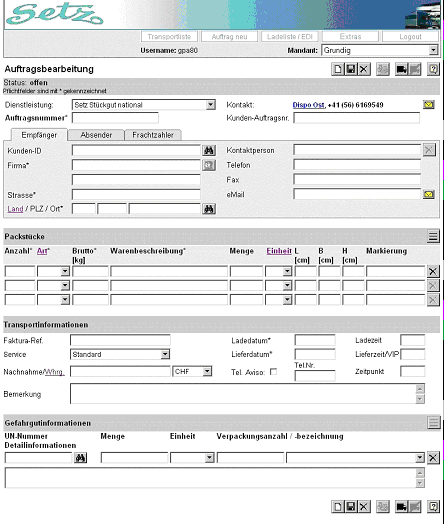
Fig. 4: Recording/alteration of transportation job orders
When the shipper prints out load lists and identification labels s/he ins dependent upon her/his own individual dispatch processes. In SetzNET a label is printed per number of consignment units. A line refers to a consignment unit (pallet, barrel, rollbox, etc. usw.). Mostly the labels are printed at the end of the dispatch lane (with regard to the physical dispatch processing) because only then is it known the number of loading units across which the consignment is distributed. Here, special, specific-purpose printers could be directly controlled.
Changes are possible up until final release and electronic transmission of a loading list that this triggers. Assignment of transportation job orders on the load lists is also subject to the individual requirements and processes of the shipper and/or the agreements ni place with Setz. One loading list is usually generated per loading instance and the corresponding consignment units are assigned there. Preparation and furnishing of consignments proceed according to the shipper’s individual processes and these tasks are not affected by SetzNET. For the downstream processes, however, it is important to Setz that all consignment units are tagged with labels generated in SetzNet and printed locally at the shipper’s.
Working with SetzNET provides the following advantages, from the point of view of the shipper:
- Direct access to the information system of logistics service providers Setz and as a result greater transparency with regard to content and status of the shipper’s own job orders.
- Ordering and access from different locations, using the same central database
- Generation of dispatch labels with unique reference numbers from the logistics service provider’s system. The result is clear and faster job order processing with unequivocal tagging of shipper’s consignments.
- Simple track & trace procedures with shipper’s own reference number for all job orders managed in SetzNET.
- Access to archived load lists and labels
- Administration of shipper’s own recipient master data or retrieval of regular transportation data (branches, etc.)
- Use of an internet-based transportation job order solution with no or minimal prior investment (reading in of text files) and without additional, local software installations.
On a qualifying note to the above, it should be mentioned, that use of SetzNET requires initial registration and set-up of the shipper by Setz, i.e. it is not spontaneously possible (e.g. unique core system debtor ID, etc.). Furthermore, every application in a new system brings with it for the people who use it extra work until they have become accustomed to it. That only represents a hindrance for shippers if they seldom work with Setz or where Setz is one of many logistics service providers. The user interface has been designed in such as way that even inexperienced users will quickly find their way around and plausibility checks when data is entered always ensures correct job orders (for the respective logistics service provider). SetzNET provides benefit for customers who regularly work with Setz and who value a comprehensive and secure job order submission to their logistics service provider without proprietary investments in an IT solution.
5. Description of solution from the point of view of Setz
From the point of view of Setz the process can be roughly divided into the following steps:

Fig. 5: Process diagram: logistics service provider
For the purpose of registering customers for the first time in SetzNET, Setz first provides new customers with a registration form. Details are added to by Setz so that after release all orders received via SetzNET are available in the required quality in the internal Setz system of transportation scheduling, execution and invoicing.
As SetzNET consists of the standard solution from yellowworld, yellowlog, set up with Setz-specific parameters, yellowworld also carries out the effective saving of the shipper profile and release of the customer for the service. With regard to release, the Setz customer receives the login data allocated direct from the yellowworld call centre, which also provides second-level support throughout the entire process. Direct responsibility for the customer is held by the customer service contact at Setz.
A conscious decision in the initial phase was made not to change existing processes in the scheduling department at Setz with the introduction of SetzNET; therefore, in addition to automatic data transfer (XML) to the standard interface of the core system for scheduling and transportation execution, the department receives notification by e-mail of the load list from the shipper. When the order is entered, the orders are already automatically assigned to the three Setz logistics units.
Setz has a sophisticated procedure for logistics planning as well as for establishing and reporting on deviations from plans [consignment tracing]. Therefore the status on all consignments is confirmed, i.e. put on "is being delivered/picked up". For consignments for which no deviations from the plan are reported, the status is put automatically on “delivered” the following day, based on the job orders executed. With regard to reports of deviations received, the respective status is manually adjusted by Setz employees in logistics.
For all these functions, the Setz logistics department is able to log into a special scheduling display on the internal website of SetzNET. Here they can access the job orders released, select a single load list or choose a status for each transportation job order on it. Possible status options are saved in a predefined selection box with the option of a comment. This status record is always saved with the user name and the time and date. The consignment tracing information is in turn available to the ordering party at all times.
In addition the Setz logistics department can at any time print out or manually check load lists released by the shipper. Any necessary clarifications, queries or confirmations by phone can thus be accomplished quickly and in a customer-orientated way.
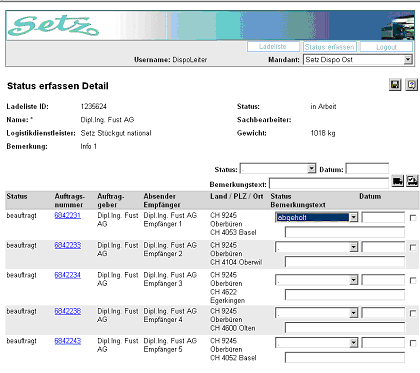
Figure 6: "Recording status – Setz logistics department perspective"
By tracing the status the shipper can call up the consignment tracing record of his transportation job orders in SetzNET (track & trace).
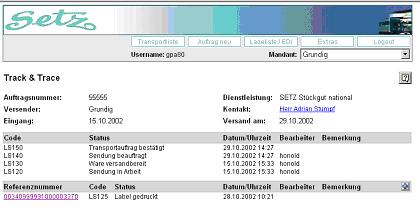
Figure 7: "Consignment tracing / track & trace"
Working with SetzNET provides the following advantages from the point of view of Setz:
- Just one interface for data transfer for all customers, which reduces costs and complexity in the company’s own information system (EDI and SetzNET).
- Job order data come in electronically, as a result (redundant) recording workload is eliminated, a consistent data quality is achieved and error sources are reduced.
- As customers use the barcode labels generated by SetzNET, all consignment units are tagged in the specified quality, which leads to an improvement in quality and efficiency of processes.
- The number of queries by shippers regarding their consignments is reduced by the information facilities which the shipper can access independently.
- The useful functions of SetzNET for regular shippers increase customer retention.
- Setz logistics can receive earlier detailed information about arriving job orders which have not yet been released by the shipper.
6. Incorporating yellowlog’s service into the Setz system
Setz did not implement SetzNET in its own IT system, but chose to use the Yellowlog service from yellowworld AG. yellowworld provides Setz firstly with user rights (licences) and secondly with day-to-day running and support. That means that Setz neither had to purchase its own hardware and software in order to use SetzNET, nor did it have to develop specialist staff for running it. Guaranteed by appropriate service level agreements (SLAs), the system is run by yellowworld in a fully responsible way.
Yellowworld, a subsidiary of the Swiss postal service, leads and runs fulfilment processes in cost allocation and information logistics. As a full service provider with some 60 employees, yellowworld supports its customers in analysis, design and realisation of a tailored solution and run the latter as an outsourced commission. The service offering is based on the platform IPEC (Integrated Platform Electronic Commerce), which due to its modular structure can be integrated with flexible services in a wide variety of system environments.
yellowlog is based on a solution by inet-logistics GmbH which is linked to IPEC. inet-logistics has specialised in the development, realisation and running of internet-based e-logistics solutions for logistics service providers and shippers. inet-logistics is active in Germany, Austria and Switzerland; yellowworld is the Swiss sales partner of inet-logistics. A wide range of logistic service providers and shippers rely on these solutions day in, day out.
By using yellowlog Setz can take advantage of a complete application and integrate the latter into its core system with just a single interface. Outsourcing has the following advantages for Setz:
- yellowworld’s many years’ expertise and infrastructure is harnessed for software and operations
- Availability of support services regarding SetzNET for shippers provided by the Customer Care Center (Helpdesk) of yellowworld.
- Use of a single platform for incoming job orders via the internet, EDI (Electronic Data Interchange) and for integration of electronic marketplaces in future.
- Customer retention is increased through the integration of yellowlog into Setz’s own website in the company’s own corporate design.
- Guaranteed (SLA) highly available, monitored 5x18 hour-service for all customers and partners.
yellowlog supports a broader functionality range than is currently used by Setz: the service range can be extended to include the services based on the transportation job order: procurement order for shippers, loading means management, repair logistics for shippers, logistic service providers, service centres or the subsequent freight costs charging.
On a qualificatory note from the point of view of Setz, it must be mentioned that the long-term competitive advantage attained through SetzNET is limited by the fact that the service is also accessible to competitors. Shippers can thus use yellowlog to commission several logistics service providers and haulage companies.
7. Outlay/workload incurred in set-up and running of the solution
Investment burden:
The following initial outlay/workload would typically be incurred by a logistics service provider such as Setz for use of the yellowlog service:
- Situation analysis and conceptual design: approx. 30 man days of external consultancy (result: deployment concept/detailed concept incl. process definitions by IT service provider as well as 30 man days of internal work)
- Licence costs: the one-off licence costs are staggered according to number of expected transactions per year.
- Set-up and implementing parameters for clients (Setz), including incorporating CI/CD, individualised user interfaces and data transfer: approximately 45 man days by yellowworld and their partners.
- Set-up of an interface on the client side: approximately 5 man days (modification of the existing standard interface)
- Entering master data on the shippers: approximately 1 man day (expenditure is included in running charges)
Ongoing costs:
Costs to the order of CHF 0.25 to CHF0.85 per transaction are incurred depending on the number of effectively released transportation job orders and on individual requirements. The running charge includes: supervised high-availability of the application for Setz and its customers, data transmission to the specified interfaces, second-level support, escalation in the case of fault reports, new releases of the standard application, the switching of shippers to the system, archiving data and transactions over 6 months. No further running costs are incurred, except for the implementation of new requirements.
8. Decision-making criteria for introduction of the system
The introduction of SetzNET was carried out at Setz as part of a strategic decision to increase on the one hand quality and processing speed while reducing on the other hand the costs of process and errors by setting up standardised, end-to-end data processing throughout all process levels
An annual budget item is reserved for this strategic programme whose aim is further development of the infrastructure. Project proposals are evaluated according to an analysis of benefit and at all events offered through an external provider. In each case the projects which are realised are those where the ratio of benefit value to investment amount proves to be most favourable or where strategic customer benefit (customer retention) is in the forefront.
A consideration of profitability in the form of an amortisation appraisal was drawn up; this consideration is not, however, the dominant criterion, as financial evaluation of benefit aspects allows such a large room for manoeuvre regarding measurement that it does not allow objective conclusions to be drawn. Rather, successful customer retention is the main focus. At Setz the assumption is that the investment will amortise in approximately 12 to 18 months.
Setz Gütertransport AG
Guido Koch, Director of Sales
Industry: Haulage contractors/Transport/Logistics, Logistics Service Providers, Transport Logistics, Warehouse Logistics, Platform Logisitics, Information Logistics, Industry Sector Logistics, E-Logistics
Company size: Medium-sized enterprise



